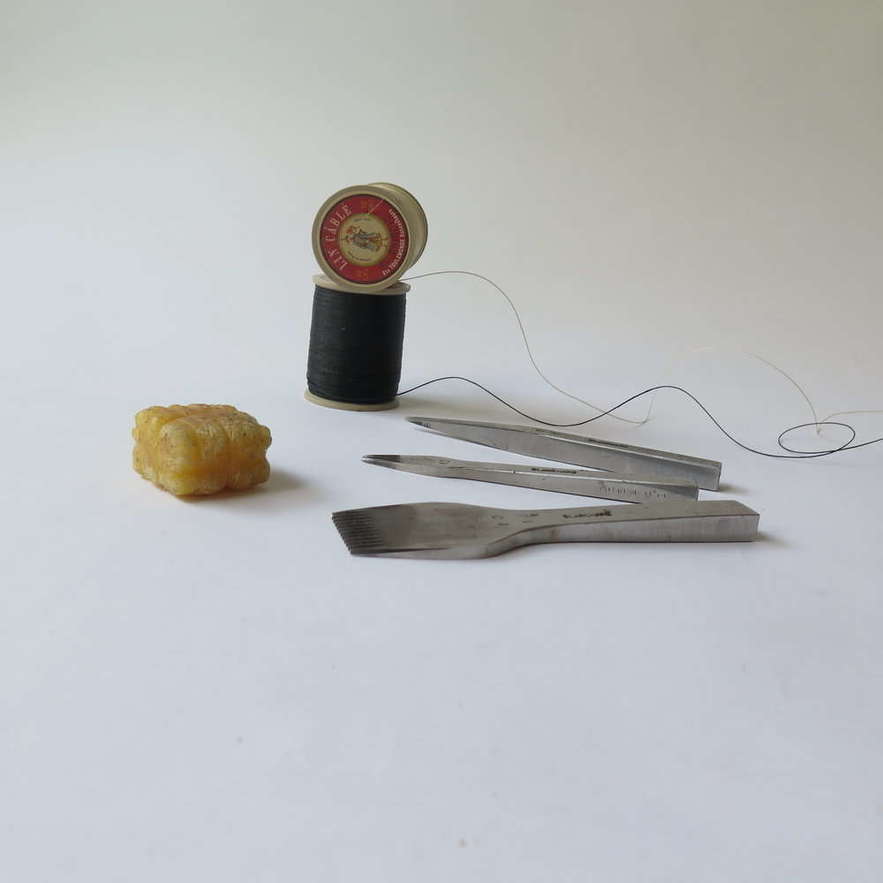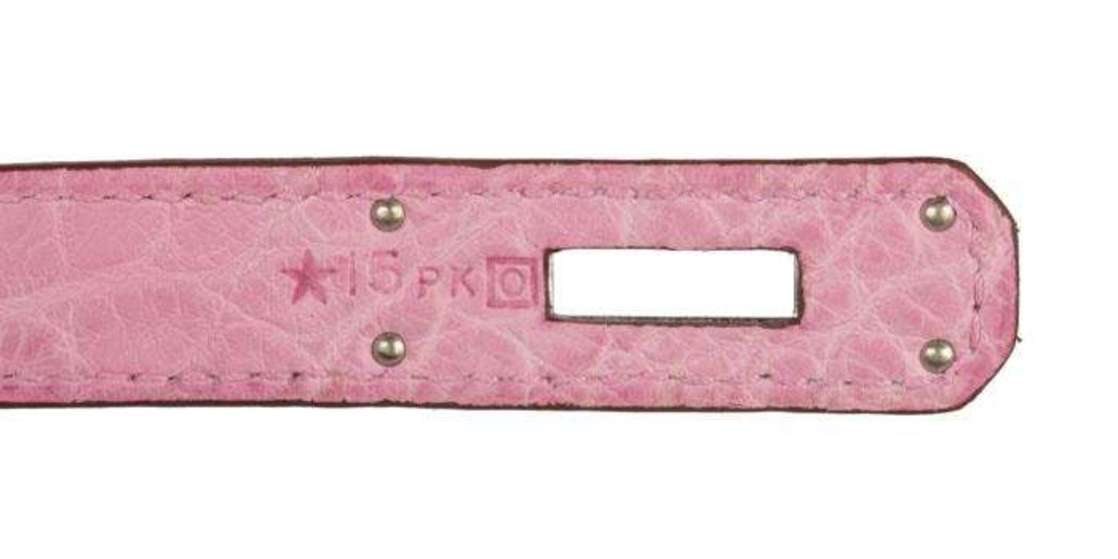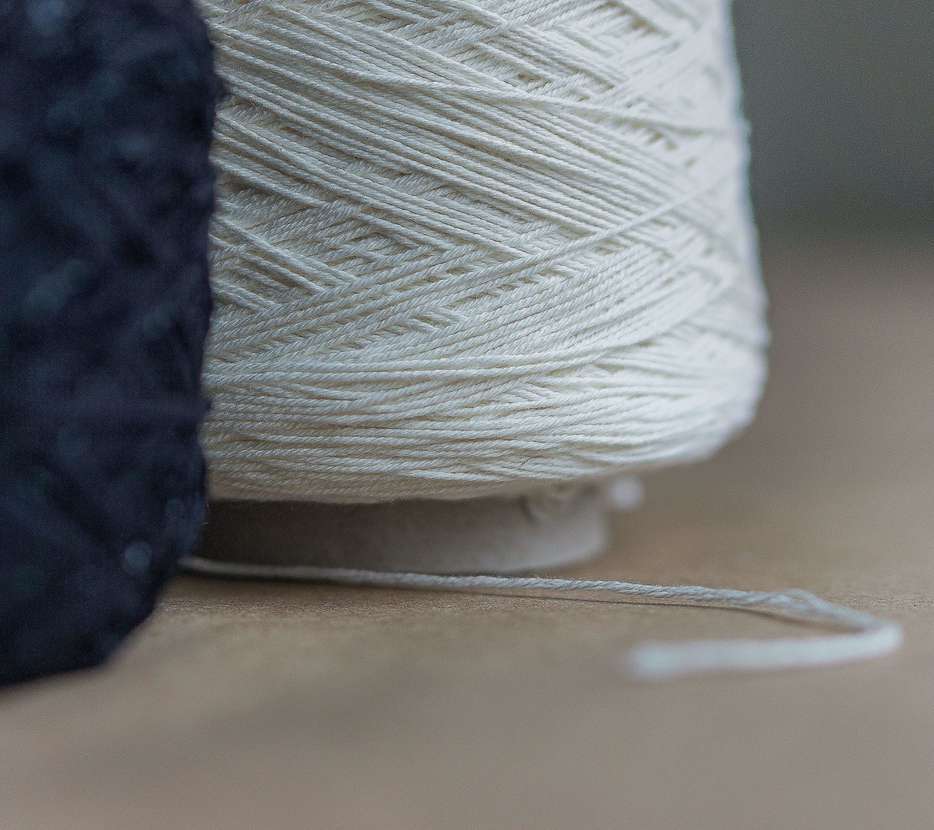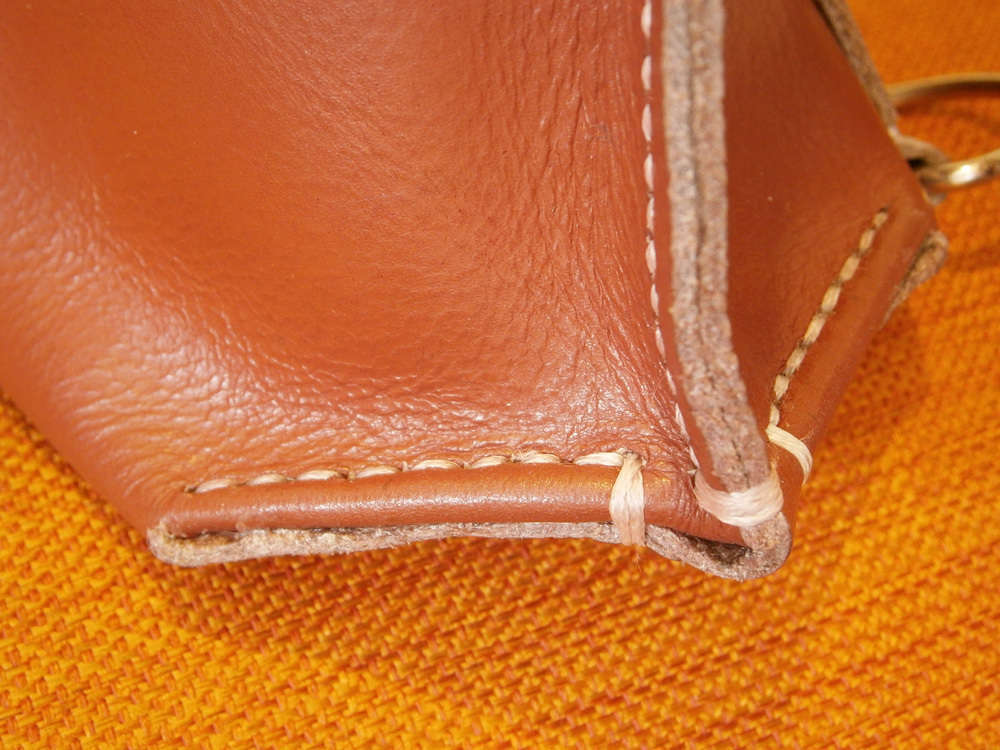Before you delve into the world of leathercrafting, it is essential to familiarise yourself with the 4 kinds of leatherwork. Just as how iron man is rendered almost completely useless without his suit, leatherworking without understanding the different types of leatherwork is entirely futile.

Source: GIPHY
Even if you’re not looking to start on your very own leatherworking project, it doesn’t hurt to get to know the various types of leatherwork. Buying a leather wallet for your dad’s birthday? Easy. This short guide takes away the pain of having to deal with dreadfully long and jargon-filled conversations with that ever-persistent salesman.

Source: GIPHY
1. European Traditional Leatherwork

Image source: Leather beast
For this particular leatherwork, saddle stitching is used to bind pieces of leather together. However, this process employs slanted pricking irons to create a stitch mark on the leather, instead of fully penetrating the leather. A diamond point awl is then used to evenly create holes on the stitch marks— a skill that requires years of mastery and dedicated practice. This probably explains the hefty price tags of highly coveted hand-stitched bags from Hermés.
Unlike other luxury brands, Hermés assigns one artisanal craftsman to each bag so as to preserve its hallmark of quality and exclusivity. Did you know that on every Hermés piece, there’s a Hermés craftsman’s signature? It may come in the form of an Omega symbol, numbers, extra letter, etc! Signing onto their leathered work also allows for tailored maintenance and repair as the craftsman behind each piece can be easily identified.
Image source: Purse blog
As mentioned earlier (before we got distracted by our favourite luxury brand), achieving a neat saddle stitch requires much practice and skill as it can be pretty difficult to align the stitching holes in a uniform manner.

With the use of mainly linen thread, this inflates the difficulty of hand-stitching as linen thread tends to be flimsier than other threads such as synthetic nylon or polyester. However, don’t let that deter you as linen threads do have their own merits! Being highly resistant against heat, light and climate, it has amazing durability that even Emperor Qin Shi Huang can attest to!
2. American Western Leatherwork

Image source: Bryologue
Similar to European Traditional Leatherwork, the American Western method uses saddle stitching as well. The difference being that stitching chisels or punches are used in replacement of slanted pricking irons, which in turn produces a straight stitch. This means that both the stitching marks and piercing of holes are made simultaneously, without the use of a diamond point awl. As such, the difficulty of creating a saddle stitch is immensely reduced.
The differences certainly don’t stop there. Unlike the Europeans, the Westerners prefer thicker threads that are made out of synthetic nylon and polyester material. With nylon and polyester threads, they are a lot easier to work with, be it running the thread through the needle or creating clean stitches.
3. Tooling

Image source: Instructables
Tooled leatherwork sticks out like a sore thumb amongst its peers as it does not involve any stitching. Rather, it involves impressing vegetable-tanned leather with stamps and tools, to create intricate pieces of ornamental leather goods. Hence, this type of leatherwork can be complemented with other methods, to be fashioned as holsters, wallets and shoes, adding it adds a decorative element.
Since only vegetable-tanned leather is capable of tooling, its appearance is dependent on the tanning process. The varying colours and earthy tones are subjected to the type of natural tannins used in the tanning process.

Want to deboss a unique cardholder with a local twist for your loved one? Tooling is the right guy for you!
4. Primitive Leatherwork

Image source: BBC
Paying tribute to its origin, primitive leatherwork refers to crafting leather for functional purposes, with no special leatherworking methods whatsoever. Like our primitive ancestors, this “method” of leatherwork is simplistic in nature and features rough cuts of animal hides held together by running threads. Discover the history of leatherwork and its primitive origins here.
Stitching all this information together, you are now ready to embark on your next leather purchase or even a leather project!

Source: GIPHY
• • •

At Culturally, we offer customised hands-on cultural experiences for you and your loved ones to enjoy and have fun whilst learning about other cultures! You can also check out our range of leather craft workshops available in Singapore here.